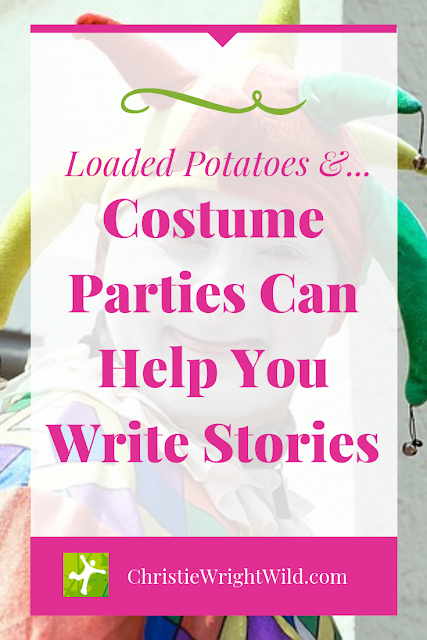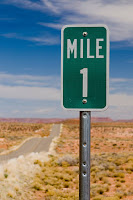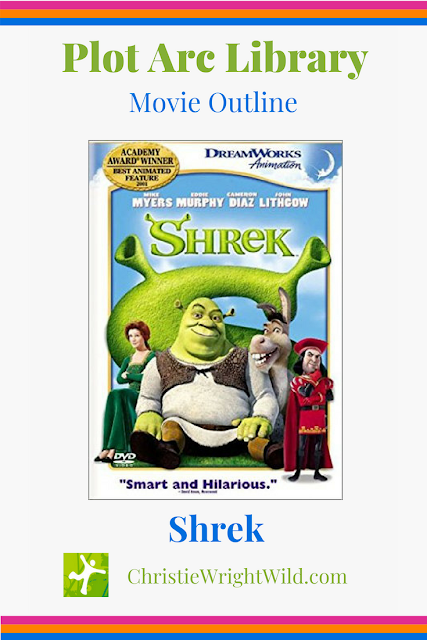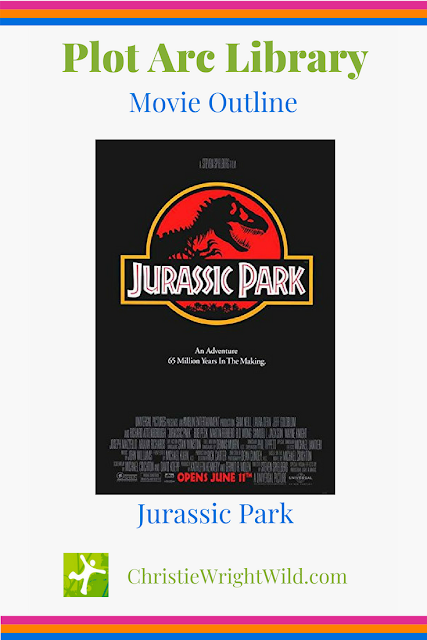So Give Your Character a Goal (and a little bit of jelly).
We've been talking a little bit about character lately. And why not? I mean, it IS one of the four fundamentals of story. So we better know how to create a great character, right? Sometimes, that's easier said than done, though. Today, we're diving into HOW to do this.
With a couple of examples to help you, this post may be a bit longer than usual. But stick with me because it's going to really help. We're going to work backward, and then (with a completely different storyline) move forward again.
Shrek in Reverse
Okay, so let's take another
look at Shrek and work backward as writer. Let's say the writer wanted to give an ogre a happy ending, a marriage to a beautiful princess. This was even hinted at in the very beginning. Shrek was using the outhouse and reading his fairytale "magazine" (as men are oft wont to do) and read the classic storybook ending. Then he laughed out loud and said, "Yeah, right, like that's ever gonna happen."
So, if the author (yes, even if it's a team of Hollywood screenwriters) wants that to be the ending, then what obstacles can get in the way? Let's say that we're able to get an ugly, stinky ogre to meet and fall in love with a beautiful princess. But we can't just let them get married even if they had to travel 100 miles to rescue her and fight a fire-breathing dragon. It's still too easy.
There has to be a low point, hence The Wall. In Shrek, The Wall is when there's a huge misunderstanding between the princess and the ogre. She decides to marry the prince since that seems to be her only option at this point. Of course, it sends Shrek into a sad funk of depression and Donkey has to step in to help out.
In order to reach The Wall, they have to actually fall in love. That's the Halfway Point. Remember, we're working backward here. In order to fall in love, they have to meet. So, how in the world is a big green ogre going to meet a princess? That is the question!
What better way to meet a princess than to have to rescue her?! I mean, it was even hinted at in the opening scene - the opening
song even! So how are you going to get an ogre to rescue a princess when that's the furthest thing from his mind? He's certainly not dreaming of getting together with a princess.
Why... you
make him, of course! But how? WHO is going to make an ogre do
anything?! Oh my, we have a problem. We're going to have to make the ogre want to rescue the princess on his own. But why? How? He's going to have to have another problem to make him want to do something he would normally never care about.
But if he doesn't care about rescuing the princess, somebody else does. Lord Farquad wants Fiona as his princess and he simply needs someone to rescue her for him. But why would Shrek want to help somebody else? He's an ogre!
Enter the fairytale creatures infesting his swamp. SHREK WANTS HIS SWAMP BACK. But his internal need is to be loved. That's the author's goal too. When he finds out who sent them to the swamp, Shrek vows to "get his swamp back."
Thus, we have a bargaining chip. Shrek will save the princess to get his swamp back. And the
character has a goal. And it's not as boring as dry toast.
Outline Your Novel:
Learn How to Study Books and Movies So You Can
Map Out a Basic Plot For Your Own Novel
Play the "What If" Game
I know I said we would go forward after we went backward, but really going backward is the way to go forward. This time, though, I'm going to use a very unfamiliar story line. Because it's one of my very own! In order to come up with the plot, I had a character with a goal. Not a piece of dry toast with no jelly.
Once you have a goal, you can create a plot. Just keep playing "what if" and work your way backward.
The main character's name in my MG (middle grade), GLEEK, is Art Schaeffer (aka Gleek). Gleek is a video game loving, snake nerd who skates by on C's and never gets to go on any of the overnight field trips because his mom can never afford it even though she works two jobs. More than anything, he wants to go to the week-long summer camp, Snakes Alive, where he can immerse himself in all things snake-ish and generally have the time of his life.
So that's his goal. To go to Snakes Alive Camp. But clearly he knows he'll never be able to go if he relies on his mom being able to pay for it. Let's have a little Shrek moment here, "Yeah, right, like that'll ever happen."
So how could he get to go? Maybe he could win some money and pay for it himself. Maybe he could inherit a large fortune. Maybe he could start a business and earn the money to go. Maybe he could win a trip to the camp.
Okay, so if he wins a trip to Snakes Alive,
how would he win it? It's a contest of some kind. Maybe he has to write an essay. Maybe he'll even get to
choose which camp he goes to. What if the winner of said contest got to choose between Space Camp, Snakes Alive, Cooking School, or Race Car Heaven. What if the winner
doesn't get to choose? Is it a radio contest? A community contest? A school contest?
What are Gleek's weaknesses? Well, we know he's not super smart, so perhaps it should be a school contest where he has to exhibit mental prowess to earn his way to camp. Like the school science fair. You know, make it really hard.
So if he has to win the science fair, he might have to get tutored. Or at least a little help along the way. What if he makes a really great project and he feels confident he could win. How can we make it harder?
If Gleek never had a single desire, there would be no story. Play "what if".
Give your character a goal. And work backward.
Open Your Story with a Promise
The promise will likely become your character's goal. It's a hint at what's to come.
In Shrek, the promise is when he laughs and says, "Yeah, right. Like that'll ever happen."
In GLEEK, the promise is in the opening chapter when Art comments that he never wins anything. He doesn't even seem to be able to beat his new video game.
In
Wonder Woman, the promise is in a memory. Of looking back to a time where she longs to feel love again. A memory of love lost. We know we're ultimately going to get a love story, even though it's a story about war.
In The Bridge to Terabithia, Jesse wants his dad to love him. He has a bunch of annoying sisters and he'd give all of them away just to have a dog. He feels invisible and like his parents don't even see him, let alone love him. This is hinted at from the actions of his family, when the dad shows Jesse's little sister favoritism. Sweet goodnights. Hugs and Twinkies in her packed lunches. The promise is that he'll find acceptance and that his dad will love him.
So, how can you hint at your own story promise? What is your character's goal? The story goal? Explore. Play "what if". Give it a go. I promise, you'll be glad you did!
Got another example of a story promise? Or an un-boring character with a goal to not have dry toast? Share in the comments!
Outline Your Novel:
Learn How to Study Books and Movies So You Can
Map Out a Basic Plot For Your Own Novel
Keep on keepin' on...
BACK TO TOP |
READ MORE POSTS







 1 Clover: Not bad. Might read twice.
1 Clover: Not bad. Might read twice.
























